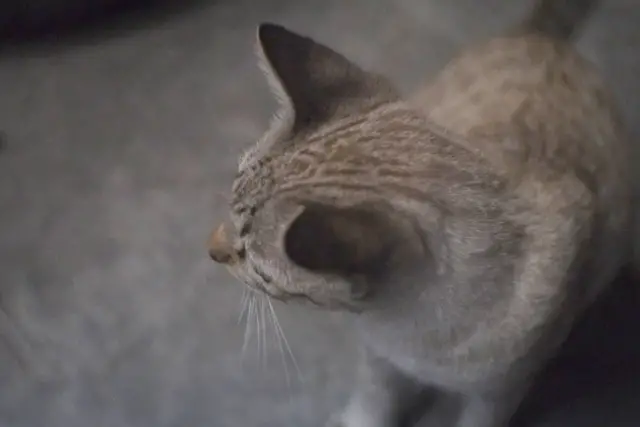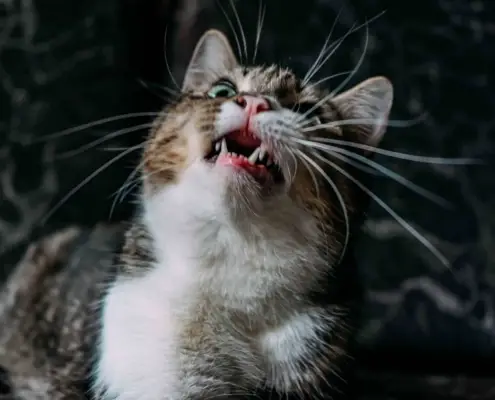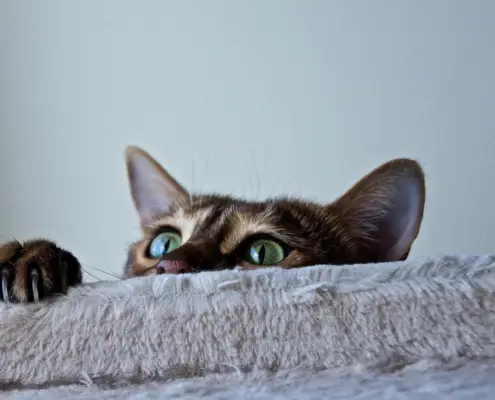
Cats are often seen as independent and aloof creatures, but contrary to popular belief, they do require human companionship. While cats may not be as socially dependent on humans as dogs, they still crave social interaction and form strong bonds with their owners. Cats are, by nature, social animals with intricate social hierarchies in their colonies. Therefore, it is important for cat owners to understand and fulfill their feline companions’ social needs.
The social nature of cats
Despite their reputation for being solitary animals, cats are highly social creatures. In the wild, cats live in colonies and form complex social structures. These colonies consist of individuals who hunt, play, and groom each other together. This social nature has been ingrained in cats through years of evolution, and even though domesticated cats may not live in colonies, they still retain this need for social interaction.
Signs that your cat is craving companionship
It is crucial for cat owners to be aware of the signs that their feline companions are craving companionship. One common sign is excessive meowing or vocalization. If your cat is constantly meowing or seeking attention, it may be a cry for companionship. Cats that are deprived of social interaction may also exhibit destructive behaviors, such as scratching furniture or urinating outside the litter box. These destructive behaviors are often a result of boredom and loneliness.
Another indication that your cat is craving companionship is excessive grooming. Cats groom each other as a way to bond and show affection. If your cat is spending an excessive amount of time grooming itself, it may be a sign that it is seeking social interaction. Additionally, cats that are deprived of companionship may become more withdrawn and exhibit signs of depression. They may hide away or avoid human contact.
Benefits of human companionship for cats
Providing human companionship for your cat has numerous benefits. Firstly, it helps fulfill their social needs and prevents feelings of loneliness and boredom. Interacting with humans can enrich their lives and provide mental stimulation. Regular social interaction can also help prevent behavioral issues, such as aggression or destructive behavior. Cats that receive adequate companionship are generally happier and healthier.
Human companionship also plays a vital role in a cat’s emotional well-being. When cats form a bond with their owners, it creates a sense of security and trust. This bond can help reduce stress and anxiety in cats, especially in unfamiliar or stressful situations. Furthermore, spending time with your cat can strengthen the bond between you and provide a sense of fulfillment for both parties involved.
How to provide companionship for your cat
Now that we understand the importance of human companionship for cats, let’s explore how to provide it. The key is to dedicate quality time to your feline companion on a daily basis. This can involve various activities such as interactive play sessions, grooming, and simply spending time in each other’s presence.
Interactive play sessions are crucial for providing mental and physical stimulation for your cat. Engage in activities that mimic hunting, such as using wand toys or laser pointers. These play sessions not only fulfill your cat’s natural instincts but also create an opportunity for bonding. Regular grooming sessions can also be a bonding experience. Use a soft brush to groom your cat, and make sure to be gentle and attentive to their needs.
Simply spending time in each other’s presence is also beneficial. Cats are highly perceptive and can sense when their owners are present and attentive. Sit near your cat while reading a book or watching TV, and allow them to approach you on their terms. This will help build trust and reinforce the bond between you and your feline companion.
Understanding your cat’s social needs
To provide the best companionship for your cat, it is essential to understand their social needs. While every cat is unique, most cats thrive on a balance of independence and social interaction. They need a safe and secure environment where they can retreat to when they need alone time, but they also require regular social interaction to satisfy their social needs.
It is important to respect your cat’s boundaries and not force social interaction upon them. Allow them to initiate contact and approach you when they feel comfortable. Cats have different preferences when it comes to social interaction, and it is crucial to be observant and responsive to their cues. Pay attention to their body language and vocalizations to understand their mood and needs.
Bonding activities for cats and their owners
Building a strong bond with your cat requires engaging in activities that promote trust and affection. One such activity is clicker training. Clicker training is a positive reinforcement method that can be used to teach cats various tricks and behaviors. Not only does it provide mental stimulation, but it also strengthens the bond between you and your cat.
Another bonding activity is providing environmental enrichment. Create a stimulating environment for your cat by providing scratching posts, climbing trees, and puzzle toys. This allows your cat to engage in natural behaviors and provides opportunities for interaction and play. Additionally, consider setting up window perches or bird feeders to allow your cat to observe the outside world, which can be a source of entertainment and mental stimulation.
The role of play in cat-human relationships
Play is a crucial aspect of cat-human relationships, as it promotes bonding and provides both mental and physical stimulation. Engage in interactive play sessions with toys that mimic prey, such as small balls or feather toys. Move the toys in a way that replicates the movement of prey, encouraging your cat to chase and pounce.
Play sessions should be tailored to your cat’s preferences and energy levels. Some cats may prefer short and intense play sessions, while others may enjoy longer and more relaxed play sessions. Experiment with different toys and play styles to find what your cat enjoys the most.
Building trust and strengthening the bond with your cat
Trust is the foundation of any strong bond, and building trust with your cat takes time and patience. Respect your cat’s personal space and avoid sudden movements or loud noises that may startle them. Allow your cat to approach you on their terms and avoid forcing physical contact. As your cat grows more comfortable, they will gradually seek out more interaction and physical contact.
Positive reinforcement is key to building trust. Reward your cat with treats, praise, or play sessions when they display desirable behaviors. This will help them associate your presence with positive experiences. Consistency is also important in building trust. Stick to a routine and provide a stable and predictable environment for your cat.
Conclusion
In conclusion, cats do need human companionship to fulfill their social needs and lead happy, fulfilling lives. While cats may not be as socially dependent on humans as dogs, they still benefit greatly from regular social interaction and bonding activities. Understanding your cat’s social needs and providing companionship through play, grooming, and simply spending time together is crucial for their emotional well-being. By building trust and strengthening the bond with your feline companion, you can create a loving and fulfilling relationship that will benefit both you and your cat for years to come.
Spend quality time with your cat and provide the companionship they need. Engage in interactive play sessions, groom them regularly, and simply spend time in each other’s presence. Your cat will thank you with their love and affection.
If you enjoyed my article, I would appreciate you sharing it with your network.

Sima Ndlebe
Sima writes for CatBuzz. He is interested in Cats, Health and Fitness, and Entrepreneurship.
Published: 18 November 2023



